
Wearable technology has evolved from basic fitness bands into sophisticated systems that blend artificial intelligence, biometric tracking, real-time connectivity, and even environmental awareness. As we move through 2025, wearables are not just smart accessories—they are personal health monitors, augmented interfaces, safety devices, and lifestyle enablers. Patsnap Eureka acts as an intelligent partner throughout the entire wearable technology development lifecycle—from discovering advanced materials and conducting patent searches to analyzing feasibility and optimizing designs. Its powerful AI agents automate complex tasks, cut research time by up to 70%, and allow R&D teams to focus on creating the next generation of groundbreaking wearable devices. This article explores the most transformative wearable technology trends in 2025, backed by expert insights and recent research.
Generative AI Revitalizes Wearable Devices
Wearables are no longer just step counters – they’re becoming intelligent companions powered by generative AI. Modern devices leverage AI to go beyond basic recommendations and deliver deeply personalized, proactive support:
AI-Generated Health Twins
Wearables can feed continuous biometric data into AI models to create a “digital twin” of your health. These AI-generated health profiles can simulate possible outcomes and predict issues. This means your wearable could soon warn you of health risks before symptoms arise, by “thinking ahead” on your behalf.
Conversational Micro-Coaches
Generative AI enables wearables to serve as always-available personal coaches in micro moments. Think of an AI that chats through your smartwatch or smart ring to guide you through stress or coach a quick workout. Such conversational coaches on wearables can nudge you when your stress is rising or celebrate when you meet your goals, all in a human-like manner.

Multimodal Data Synthesis
Generative AI excels at fusing multiple data streams, and wearables provide plenty of streams – heart rate, motion, sleep stages, blood oxygen, and more. Advanced wearables are beginning to synthesize these signals to form a 360° view of your well-being.
In short, AI in wearables is moving from reactive to proactive. Your wearable might soon act like a health twin and life coach, not only tracking metrics but understanding and guiding you. This trend is backed by real product momentum – from digital health startups to big brands.
Smartwatches Evolve into Essential Health Hubs
The humble smartwatch is evolving from a convenience gadget into an indispensable health hub. New silicon and sensors, coupled with health-centric operating systems, are turning wrist-worn devices into critical tools for managing chronic conditions, senior safety, and even workplace well-being:
More Powerful Chipsets for Health Features
The latest watch processors are designed to handle advanced health tasks. This means a user can ask the watch questions and get instant answers from the AI, no cloud needed. These new chipsets ensure that even as watches pack in more sensors and analytics, they remain responsive and all-day on a single charge. Both the BeagleBone Black-based portable health monitoring systems and the CMOS system-on-chip for physiological tracking highlight how advanced chipsets are driving healthcare innovation. By enabling real-time data collection, secure transmission, and seamless smartphone integration, these powerful embedded platforms are reshaping how health monitoring devices operate—making them smarter, faster, and more accessible for everyday use.
Next-Gen Biometric Sensors
2025’s smartwatches are integrating clinical-grade sensors. Watches now monitor blood oxygen (SpO2), skin temperature, and even blood pressure trends. Some models can integrate with continuous glucose monitors. Early signs of chronic issues are now catchable on the wrist.
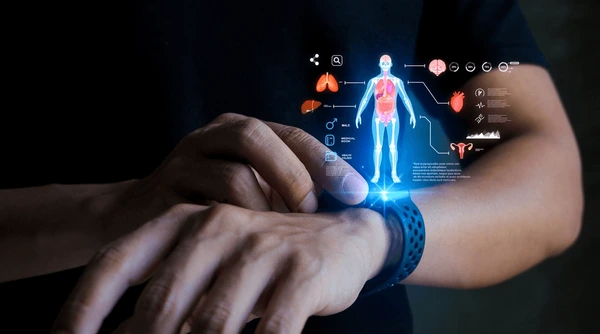
Health-First OS Ecosystems
Operating systems like Apple’s watchOS and Google’s Wear OS have doubled down on health features. These platforms also facilitate sharing data with healthcare providers securely. The smartwatch OS is effectively becoming a health OS.
Chronic Care and Senior Safety
Smartwatches are becoming essential for those with chronic illnesses and older adults. They measure heart rate and blood oxygen during sleep to detect issues early. Older people are also wearing smartwatches as safety nets – features like fall detection and emergency SOS calls provide peace of mind.
Workplace Wellness and Safety
Employers in physically demanding fields are equipping workers with smartwatches and smart bands to improve safety. Sensors can detect risky movements or poor posture and immediately alert the worker. Data from workplace wearables shows huge potential.
In summary, the evolution of smartwatches has turned them into vital health monitors and safety devices. With beefier chips and better sensors, your smartwatch is approaching medical-grade capabilities in a consumer-friendly form
Novel Health & Fitness Sensors Hit the Mainstream
A new generation of biosensors is emerging in wearables. In 2025, we’re seeing rapid advances in sweat analysis, hydration tracking, core body temperature sensing, and even mental health monitoring via biometrics.

- Sweat and Hydration Sensors: Sweat sensors can measure electrolyte loss, dehydration levels, and even metabolites. Sweat analysis wearables are also being explored for blood sugar monitoring and detecting biomarkers of stress or fatigue.
- Core Body Temperature Monitoring: Temperature is a critical vital sign. Now, wearable sensors can continuously track your internal temperature non-invasively. This is a game-changer for athletes and has medical uses like tracking fever patterns.
- Mood and Mental Health Metrics: Stress and mood have physiological signatures. The key here is often electrodermal activity (EDA) sensors, which measure subtle changes in skin conductivity. Some devices feature custom EDA sensors to continuously monitor sympathetic nervous system activity and an AI that interprets this to gauge emotional state.
- Other Novel Biosensors: Researchers and companies are experimenting with sensors for hydration, UV exposure, posture, and even non-invasive glucose monitoring. These sensors are being backed by scientific validation and real-world adoption.
Emerging health sensors are supercharging what wearables can do. Your next device may analyze sweat, infer your core body temperature trend, and even keep an eye on your mood and stress.
The Rise of Smartglasses and Smart Rings
Smartglasses and smart rings are gaining traction thanks to their lightweight design, discreet functionality, and novel interfaces:
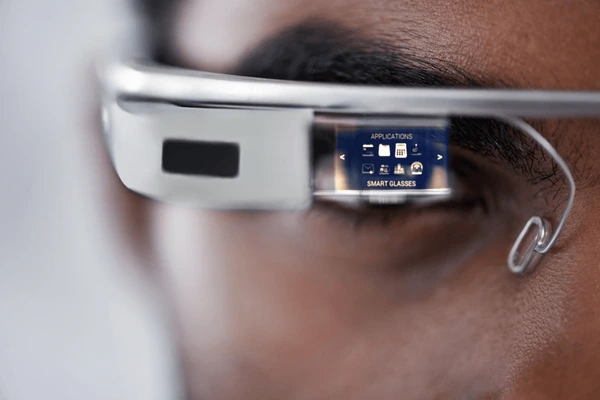
Smartglasses Go Lightweight and Stylish
The emphasis is on looking “normal” and being comfortable. Lightweight design is crucial and companies are using micro-displays and compact batteries. From CES 2025 innovations to Apple’s patented designs, smartglasses are becoming lighter, more durable, and more stylish than ever. Features like frame bending compensation and advanced materials ensure users enjoy a seamless, comfortable experience without sacrificing performance or aesthetics.
Privacy-Centric Features
The new generation addresses privacy concerns with visible recording indicators and designs that emphasize user and public privacy. From privacy-first mobile device designs to innovations by leaders like Apple, Adobe, and Smartclip, privacy-centric features are reshaping user experiences. These advancements ensure that smartglasses, smart rings, and other wearables protect personal data while delivering smarter, more connected functionalities.
Passive Health and Fitness Monitoring
Smartglasses are starting to carry health functions passively. Some have built-in optical sensors or motion sensors to contribute unique data. By passively tracking vital signs and fitness metrics, smartglasses and smart rings are transforming chronic disease management and fitness journeys. These devices also enable remote health monitoring, offering a more proactive, patient-centered approach to wellness.
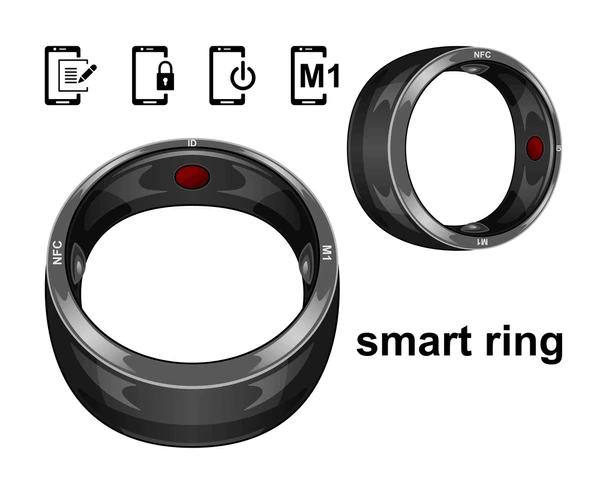
Smart Rings – Discreet, Always-On Health Monitors
Smart rings can accurately track heart rate, HRV, sleep stages, and more. These devices are appreciated for being unobtrusive and are often worn 24/7. Smart rings bring discreet, continuous health monitoring to users’ fingertips, offering insights into sleep, heart health, and daily activity. With advanced sensors, some models even provide specialized tracking for blood oxygen levels and early detection of heart irregularities.
Lightweight Design & Comfort
Smart rings and glasses share a common design ethos: wearability. Battery life for rings is about a week, and glasses are getting lighter. Advances in lightweight materials and curved support structures have transformed wearable displays, making them far more comfortable and practical for daily use. Meanwhile, innovations like flexible displays and stretchable fabrics help ensure that modern wearables remain lightweight, adaptable, and comfortable enough for extended wear without sacrificing functionality.
Gesture-Based and Spatial Interfaces
Smartglasses and rings are introducing new ways to interact beyond taps. Gesture-based controls and spatial interfaces are being actively explored. Gesture-based and spatial interfaces make interactions with technology more natural, intuitive, and accessible, especially in immersive environments like AR and VR. From enhancing public and hands-free interactions to improving accessibility and efficiency in specialized tasks, these innovations are reshaping how users engage with digital content across multiple industries.
Smartglasses and smart rings represent a shift toward wearables that are less visible but more integrated into our lives.
VR Wearables: Revenue Growth Amid Steady Unit Sales
VR headset unit sales have plateaued, yet industry revenue is climbing, driven by higher-priced premium devices and thriving enterprise use cases:

Increasing Adoption in Gaming and Entertainment
VR gaming continues to drive major revenue growth. According to Grand View Research, the global VR gaming market is projected to reach USD 9.55 billion by 2022. Rising disposable incomes, changing lifestyles, and rapid advancements in technology fuel this growth. The highly immersive gaming experience that VR delivers has led to widespread consumer adoption and boosted overall market revenues.
Expansion into New Applications
Beyond gaming, VR is making significant inroads into industries like real estate, healthcare, and retail. In real estate, VR virtual property tours are increasing customer engagement and accelerating sales. In healthcare, VR is revolutionizing medical training and therapy, creating new revenue streams and broadening the technology’s market reach.
Advancements in VR Hardware and Software
Continuous innovation in VR headsets is enhancing user experiences. Improvements in resolution, motion tracking, and headset comfort are attracting a wider audience. These technological advancements are boosting sales, increasing average selling prices, and making VR more mainstream.
Major Investments by Tech Giants
Technology leaders like Meta (formerly Facebook), Google, and Sony are making substantial investments in VR. Their efforts drive innovation, reduce production costs, and make VR devices more accessible and affordable to consumers worldwide.
Growing Demand for VR Content
As the market matures, demand for diverse VR content is surging. VR is expanding beyond games into immersive videos, concerts, and virtual events, opening new revenue channels for content creators and driving continuous market growth.
Enterprise and Remote Work Adoption
The COVID-19 pandemic accelerated VR adoption across enterprises. Businesses are using VR for remote collaboration, employee training, and virtual meetings. This enterprise segment is expected to keep growing, further strengthening overall market revenues.
Strong Growth in Unit Sales
The global VR headset market continues to expand. Lucintel projects it will reach $38.7 billion by 2024, growing at a 41.0% CAGR from 2019 to 2024. Steady increases in unit sales, higher average selling prices, and expansion into new markets are collectively fueling robust revenue growth in the VR wearables sector.
Supercharge Wearable Tech Innovation with Patsnap Eureka AI Agents
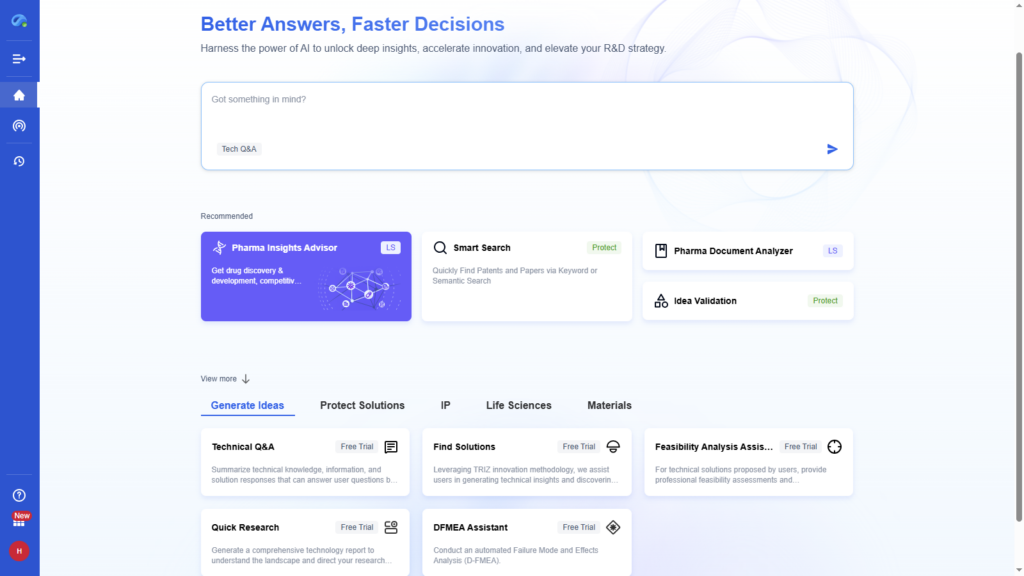
As wearable technology trends skyrocket in 2025, rapid innovation is no longer a luxury—it’s a necessity. Whether you’re pushing the boundaries of smartwatches, smartglasses, fitness bands, or medical wearables, speed and precision in R&D are critical. This is where Patsnap Eureka’s AI agents redefine the innovation process.
Patsnap Eureka acts as an intelligent partner across the entire lifecycle of wearable technology development—from materials discovery and patent searches to feasibility analysis and design optimization. Its AI agents are designed to automate complex tasks, cutting research times by up to 70% and letting R&D teams focus on breakthrough ideas.
Find Breakthrough Materials and Solutions for Wearables

In a world where materials innovation is driving wearable trends, Eureka’s Find Solution AI agent is a game-changer. Simply describe your technical challenges—like improving sensor durability or creating flexible displays—and Eureka instantly proposes proven, high-quality solutions pulled from a vast database of patents, research, and real-world applications.
For instance, when developing next-gen flexible biosensors or stretchable batteries for wearables, Eureka can suggest surface modification techniques, advanced composites, or novel nanomaterials that boost performance without increasing production costs.
Gain R&D Inspiration to Stay Ahead

Staying at the forefront of wearable innovation means constantly exploring new ideas. Eureka’s AI agents deliver detailed, actionable insights, helping teams uncover emerging technologies, cross-industry applications, and novel engineering techniques.
Instead of tedious manual research, designers of smart rings or AR glasses can tap into Eureka’s AI-driven searches to spark fresh concepts, accelerate design iterations, and shorten time-to-market.
Accelerate D-FMEA for Safer Wearable Designs
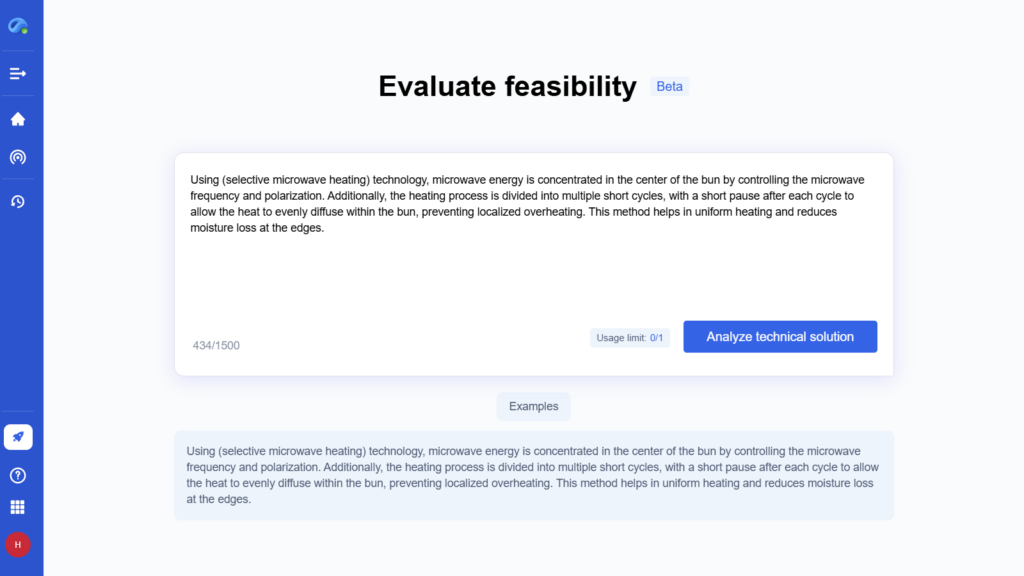
Wearable devices must be not only cutting-edge but also reliable and safe. Eureka’s D-FMEA and D-FMEA Assitant agents automate failure mode and effects analysis (FMEA), pinpointing potential risks early in the development cycle.
Whether it’s a fitness tracker’s battery stability or a health monitor’s electrode performance, Eureka’s intelligent scanning of patents and technical literature ensures that teams address hidden vulnerabilities proactively—making devices safer and regulatory compliance smoother.
Unlock Material Breakthroughs with Material Performance Analysis
Material innovation underpins trends like lightweight wearables and biocompatible sensors. Eureka’s Material Performance Analysis agent specializes in scanning and analyzing materials properties quickly and precisely.
Instead of spending hours searching for the ideal polymer blend or metallic ink for flexible circuits, wearable tech engineers can simply input a few parameters, and Eureka delivers detailed material candidates tailored for flexibility, conductivity, or durability.
Learn New Technical Knowledge on Demand
Patsnap Eureka doesn’t just deliver solutions—it builds your team’s technical muscle. For companies designing next-generation health monitoring devices or immersive AR wearables, Eureka offers a structured, fact-based innovation toolbox filled with technical know-how, case studies, and industry insights.
This empowers R&D professionals to move beyond trial-and-error and embrace a more strategic, data-driven approach to wearable technology innovation.
Conclusion
The wearable tech landscape in 2025 is defined by innovation on all fronts. These five trends show wearables evolving into a holistic ecosystem that can track vital signs, coach behaviors, connect us with digital worlds, and augment our reality – all while fitting seamlessly into our lives. Companies are learning to do this in a user-centric way – focusing on privacy, comfort, and real utility.
Wearables are no longer just about step counts or notifications. The trends of 2025 show wearables enhancing our health, safety, and experiences by being ever-present but not intrusive. The future of wearables is here, and it’s smarter, more personal, and more essential than ever.
To get detailed scientific explanations of Wearable Technology Trends, try Patsnap Eureka.


